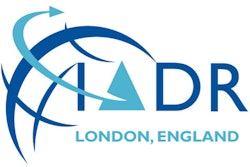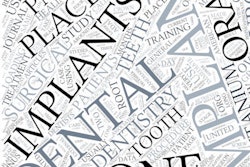
What does oral health literacy have to do with periodontal health? Could improving oral health knowledge boost oral health? A new study examined the relationship between these issues and how it may affect treatment outcomes.
Patients at a Cleveland clinic were asked to fill out a questionnaire that measured oral health literacy. The study's author then examined associations between patients' oral health knowledge, dental disease risk and experience, and demographic variables. Participants with lower oral health literacy levels had worse periodontal health, the author reported in BMC Oral Health (October 24, 2018).
"Improving the oral health literacy of patients may help in the efforts to improve the adherence to medical instructions, self-management skills, and the overall treatment outcomes," wrote Jagan Kumar Baskaradoss, BDS, MPH, who works for the Division of Dental Public Health at Kuwait University in Kuwait City.
It's what you know
Dr. Baskaradoss defined health literacy as the ability to understand, communicate about, and use healthcare information and services, which can be affected by factors such as education and culture. Limited health literacy has been linked to poorer health and outcomes, he noted.
“Improving the oral health literacy of patients may help in the efforts to improve ... the overall treatment outcomes.”
The current study was conducted to analyze the relationship between oral health knowledge and oral health status among a convenience sample of patients attending the Case Western Reserve University dental clinic in Cleveland in February through April 2015.
Dr. Baskaradoss collected data from 150 African-American or Caucasian patients who were 18 years or older and did not require emergency care. The study included only Caucasian and African-American patients because they made up 90% to 95% of this dental clinic population.
The participants provided information that included their demographics, income, education, insurance, and smoking history. Of the 150 participants, 55% were female and 60% were Caucasian, and their average age was 53.3 years.
Dr. Baskaradoss also administered the Comprehensive Measure of Oral Health Knowledge questionnaire to them and obtained data on their periodontal and caries risk assessments from electronic records.
The study divided participants into three categories based on their periodontal health:
- Severe periodontitis: two or more interproximal sites with clinical attachment level of 6 mm or greater on more than one tooth and one or more interproximal site with a probing depth of 5 mm or greater
- Moderate periodontitis: two or more interproximal sites with clinical attachment level of 4 mm or greater on more than one tooth or two or more interproximal sites with a probing depth of 5 mm or greater on more than one tooth
- Healthy or mild periodontitis: neither moderate nor severe periodontitis
Dr. Baskaradoss also separated the participants into two groups based on their oral health knowledge questionnaire score: limited oral health knowledge (18 or less), which included 60.9% of participants, and adequate oral health knowledge (greater than 18).
In addition, he divided the patients by education:
- Those who had completed high school, received a GED diploma, or had a lower level of education (26%)
- Those who completed some college or a technical degree (34%)
- Those with a college degree (29.3%)
- Those with a professional degree (10.7%)
Among the demographic variables, those who had more education or who identified as Caucasian were significantly more likely to have adequate oral health knowledge.
| Relationship between oral health knowledge & education | ||
| Low oral health literacy No. (%) |
High oral health literacy No. (%) |
|
| High school graduate/GED or less | 34 (44.6%) | 5 (8.6%) |
| Some college or technical degree | 28 (30.4%) | 23 (39.7%) |
| College degree | 23 (25.0%) | 21 (36.2%) |
| Professional degree | 7 (7.6%) | 9 (15.5%) |
The mean decayed, missing, filled permanent teeth (DMFT) score for the participants was 7.33. For periodontitis, 45.3% of interview participants were rated as mild/healthy, 28.0% moderate, and 26.7% severe. While the author found no difference in caries risk level between those with limited or adequate oral health knowledge, the group with limited knowledge had significantly higher mean values for missing teeth and lower mean values for filled teeth.
"A possible explanation is that an individual with adequate oral health literacy not only recognizes oral diseases at an earlier stage than someone with limited oral health literacy but also is more prompt in seeking the required treatment," the author wrote.
Additionally, he found a statistically significant difference in periodontal risk assessment levels between those with limited and adequate oral health literacy. Among those with limited oral health literacy, 29.3% had a high periodontal risk, compared with 6.9% of those with high knowledge. One-third of those with low oral health literacy (33.7%) had severe periodontitis, compared with 15.5% of those with high literacy. A final model that included caries risk assessment, periodontal risk assessment, DMFT scores, and periodontal status found that periodontal status was significantly associated with oral health literacy scores (p = 0.015).
Improving knowledge
The author listed the following study limitations:
- The data were drawn from a convenience sample of patients attending one clinic and based only on their behaviors, not that of the community.
- The study's design did not allow for examination of cause and effect.
Further research could expand knowledge of the effects of improved oral health literacy, he noted.
"Future research could focus on assessing the impact of oral health literacy interventions on oral health, which could be valuable for clinical practitioners," Dr. Baskaradoss concluded.



















